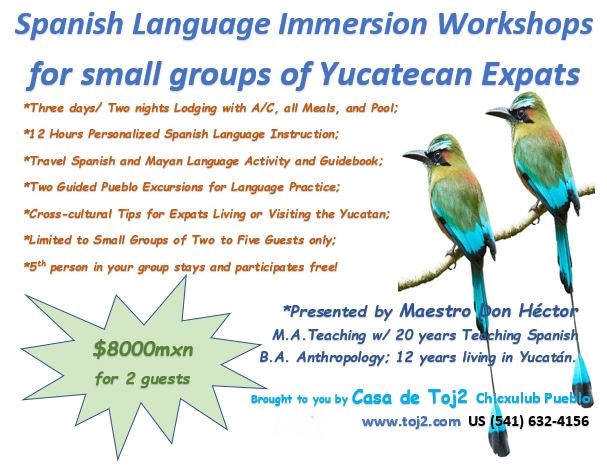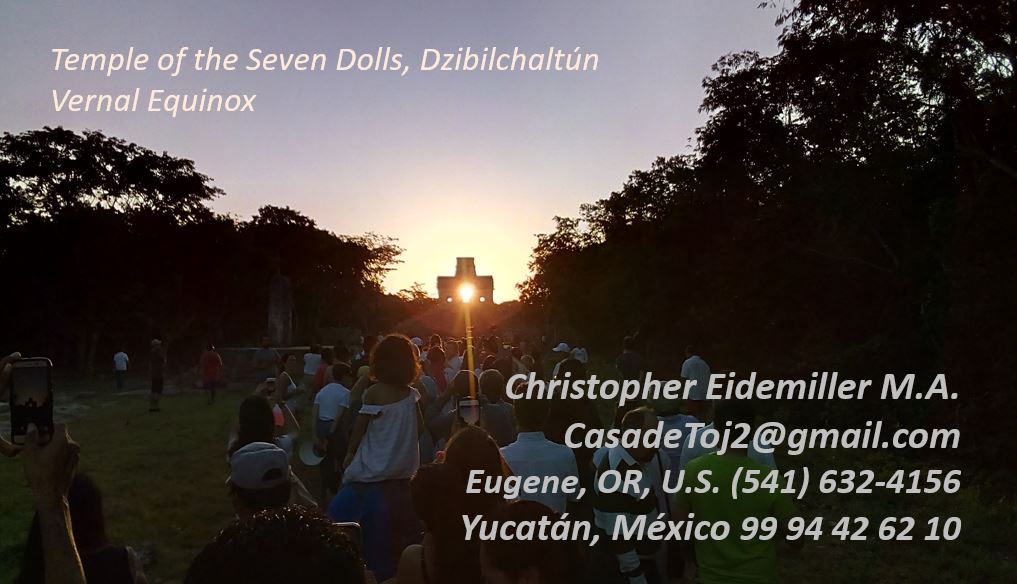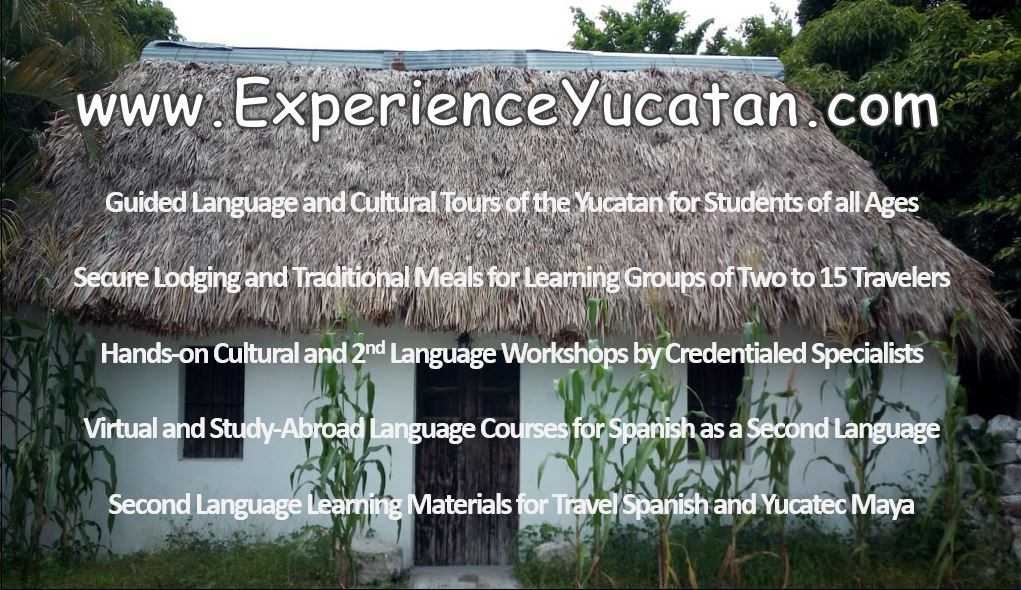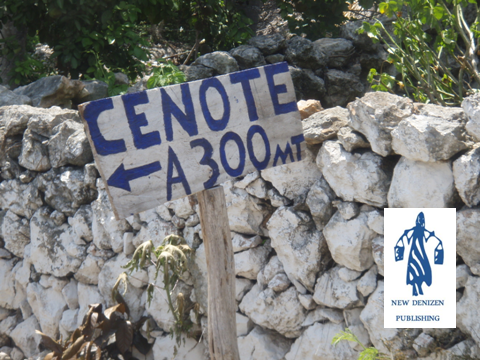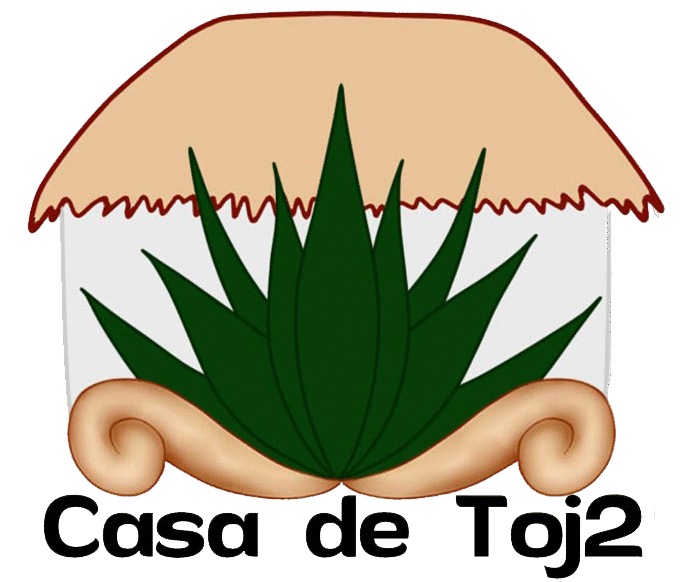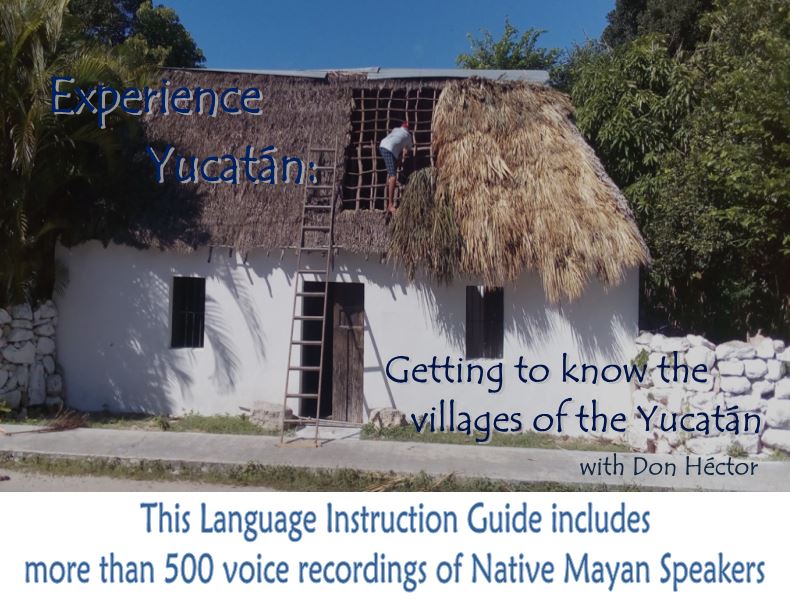
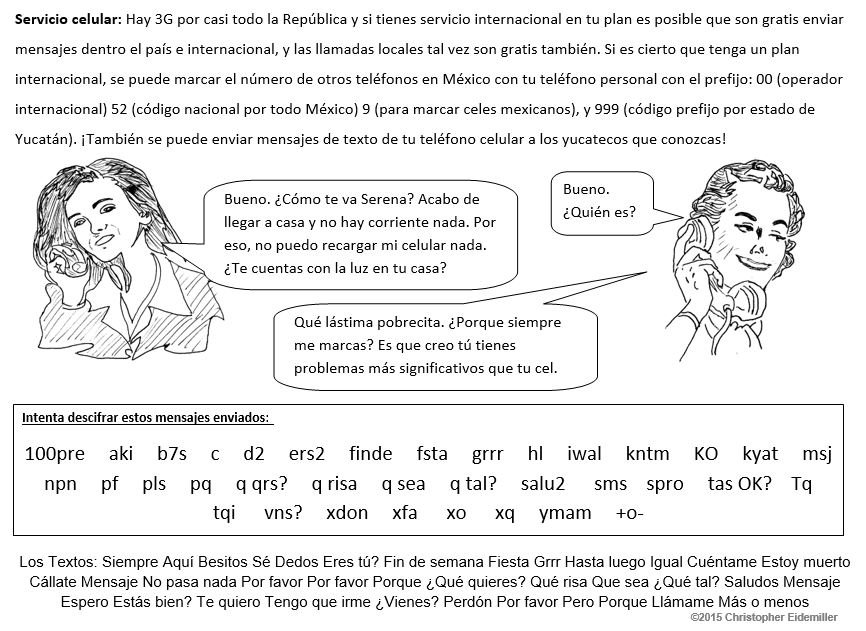
Serving as both a ‘Language Instruction Manual’ as well as a ‘Travel Guide Book’ for the Yucatan Peninsula, this independent publication includes ten chapters of 15 language-dense pages designed to guide the backpack adventurer or potential expatriate to a greater understanding of a culture that time has nearly forgotten. Preparing for just such a trip makes up the formative chapters of the text, including a fast-paced review of highly-applicable grammar and several useful phrases for use by Second Language learners who already have an introduction to the Spanish language. Serving as a medium for authentic activity in the form of a travel simulator, the reader prepares for travel in the first chapter, and arrives to Cancun International Airport in the second, in which the traveler becomes accustomed to the Spanish-speaking environment through a series of applicable dialogues for use in taking advantage of public transportation, ordering inexpensive meals, and obtaining economy hotels rooms. However, upon arrival to the State of Yucatan in the fourth chapter, this one-of-a-kind “Language Tour Guide Book” offers an opportunity for the reader to exchange the tourist zones on the eastern coast of the peninsula for a chance to get better acquainted with the people and places associated with the contemporary Mayan Culture.
Each chapter includes several author-owned photographs; dozens of line art drawings to represent flora, and fauna of the area; several informative hand-sketched maps of the region for reference purposes; along with instructional activities throughout the text in both Spanish and Yucatec Maya for the enhancement of multilingual language skills. Useful phrases in practical dialogues, presented in both languages; along with easy-to-read informational selections written for the second language learner that offer travel tips and historical facts for use by the reader, transformation from the role of tourist to participant becomes more deliberate as the objectives of the book are achieved. While the first half of the book is primarily focuses on the enhancement of Spanish language skills specific to a developing a more profound appreciation for the cultural diversity of Yucatan Peninsula, the second half centers around the language of the local pueblos, including several highly-practical instructional activities for development of productive language skills in Yucatec Mayan. Finally, the reader finds an appendix that centers on the regional dialect of the peninsula, its substrate indigenous influence, a list of opportunities for solving the problems associated with language extinction, which also includes one-hundred-and-fifty useful Mayan phrases that allows the reader to participate in helping to conserve a language and culture that is disappearing whether it is right before our eyes or simply outside our understanding.
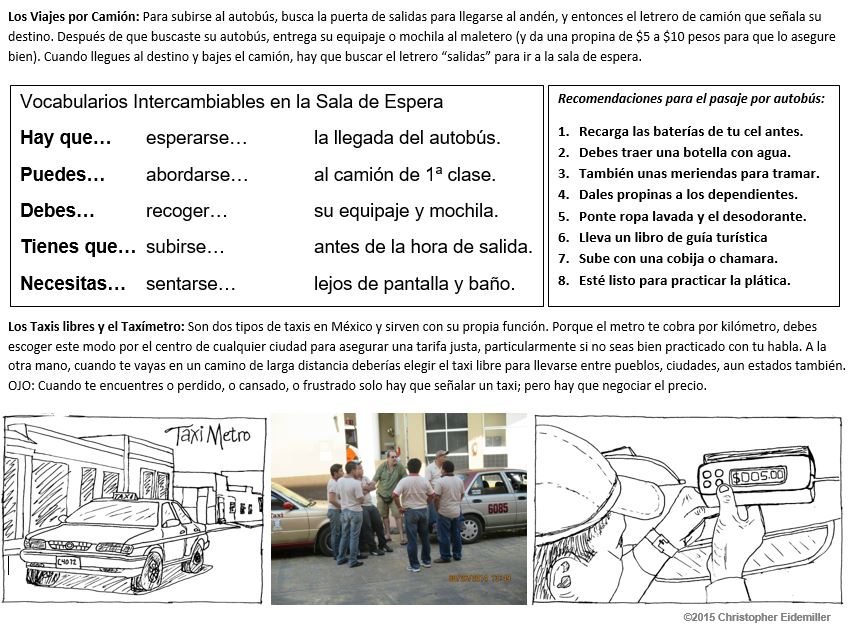
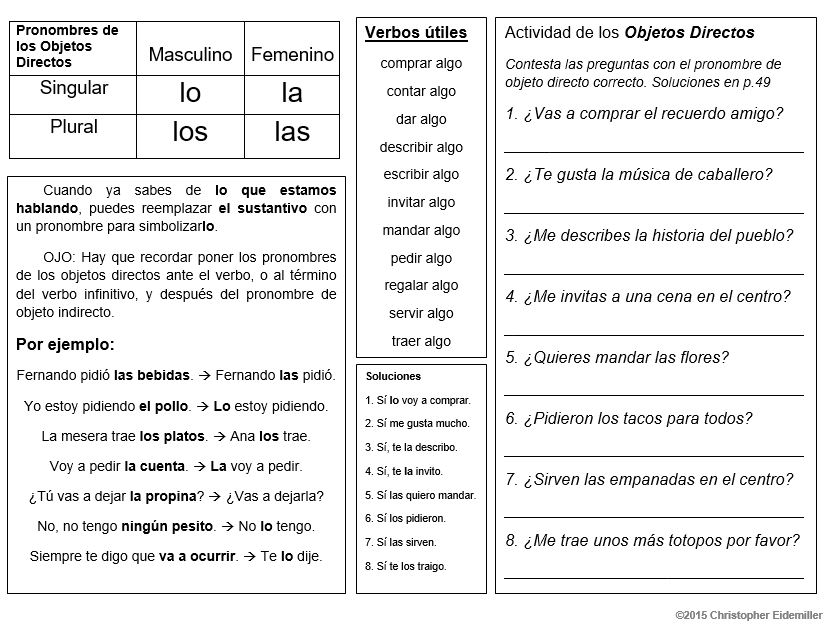
As a veteran classroom teacher of Spanish as a Second Language with graduate degrees in Teaching Spanish as a Second Language (MAT) and Spanish Linguistics (MA), as well as an undergraduate degree in Anthropology and Field Archaeology (BA), I am confident that this book will serve well in the Second Language and Bilingual Social Studies classroom, as well as providing a resource for budget travelers to Experience Yucatan: In Search of the Mayan people. The content within, which incorporates dozens of language-learning instructional pieces, invaluable travel tidbits for enhancing your educational adventure, and profound morsels of cultural information that focus on the situation of the contemporary people who descended from the original inhabitants of the Americas, certainly provides a venue for enhancing Second Language skills in Spanish through practical application; but more importantly, consistent with the intention of providing a resource for the potential-traveler/ language learner to access the Mayan pueblos of the region, where language students are presented with the opportunity to learn about the social and political injustices experienced by one of the oldest cultures in the New World, including the fallacy that accepts their disappearance from the face of the Earth some 500 years ago.
Presenting a working introduction to the Yucatec Mayan Language and Culture, and therefore a deeper understanding of this longstanding speech community, the book: Experience Yucatan: En Busca de los Pueblos Yucatecos approaches Second (and third) Language learning through functional instruction. Offering implicit dual-language dialogues in Mayan and Spanish, and utilizing authentic activities for reinforcement purposes, this language learning text also offers access to the bilingual speech patterns of the region through a series of cultural presentations designed for applying new grammar concepts and vocabulary in the contemporary Mayan World. Ultimately, this informal yet education language instruction manual ultimately serves as a guide book for animating the Mayan Language within the cultural parameters that the surrounding society prefers to ignore. The fact is, every year languages become extinct, particularly the indigenous languages of the New World that live in the shadow of a dominant colonial society seeking only to profit on its substrate influence; and only through insightful understanding of these socio-political relationships, between a dominant colonial culture and its citizenry of highest disregard, can we hope to avoid the loss of another precious speech community; and only through language learning can we truly approach the matter of language conservation with any success.
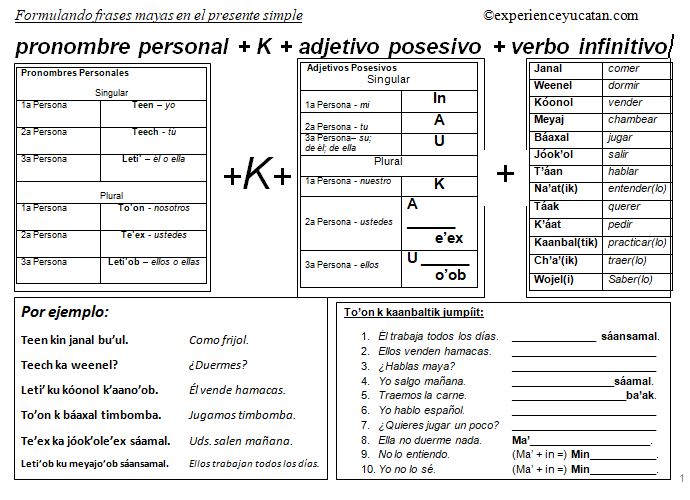
Download a Free Sample
